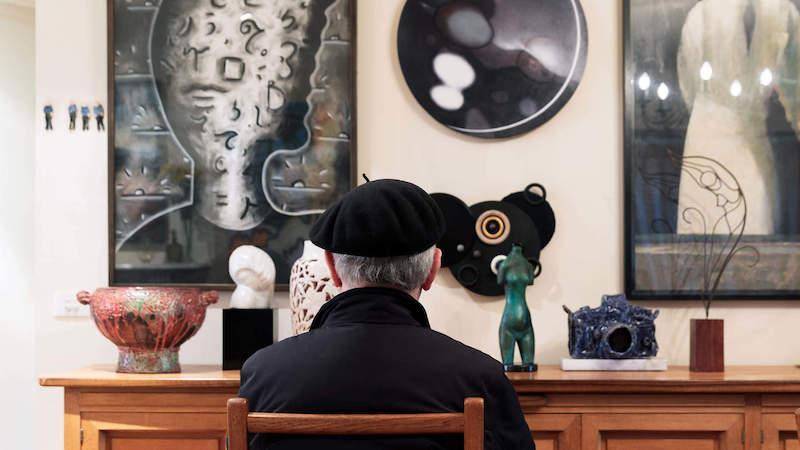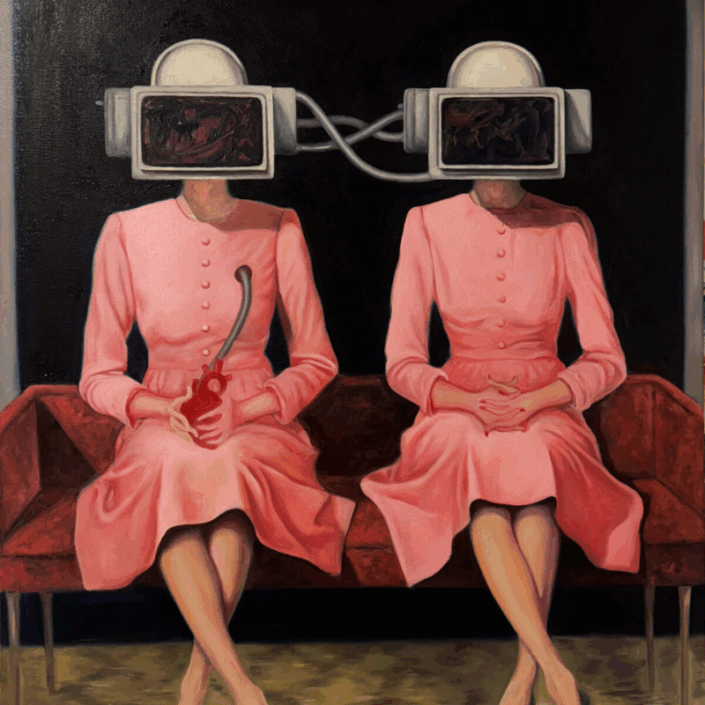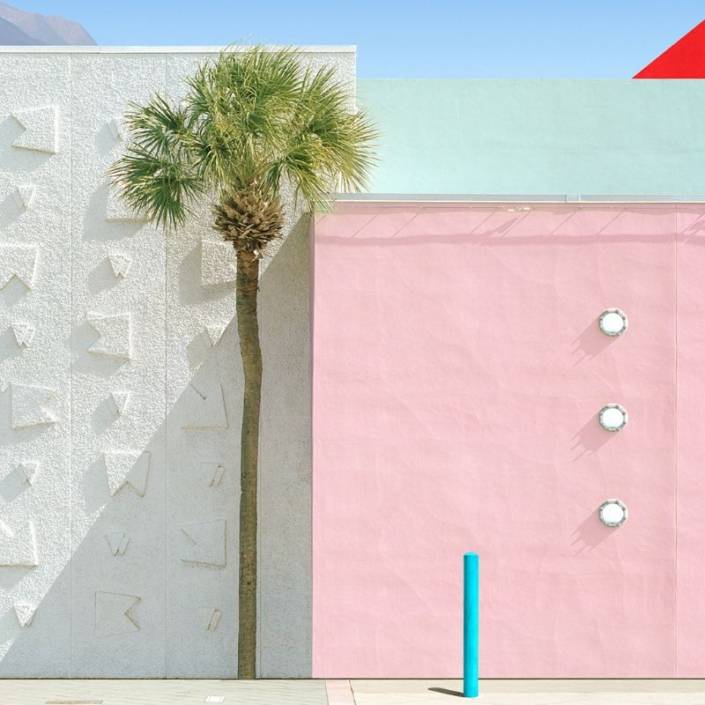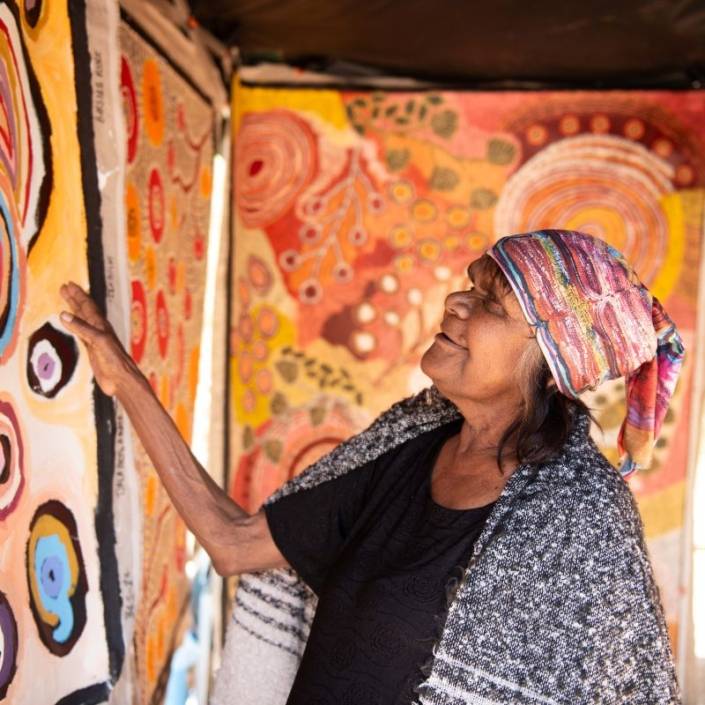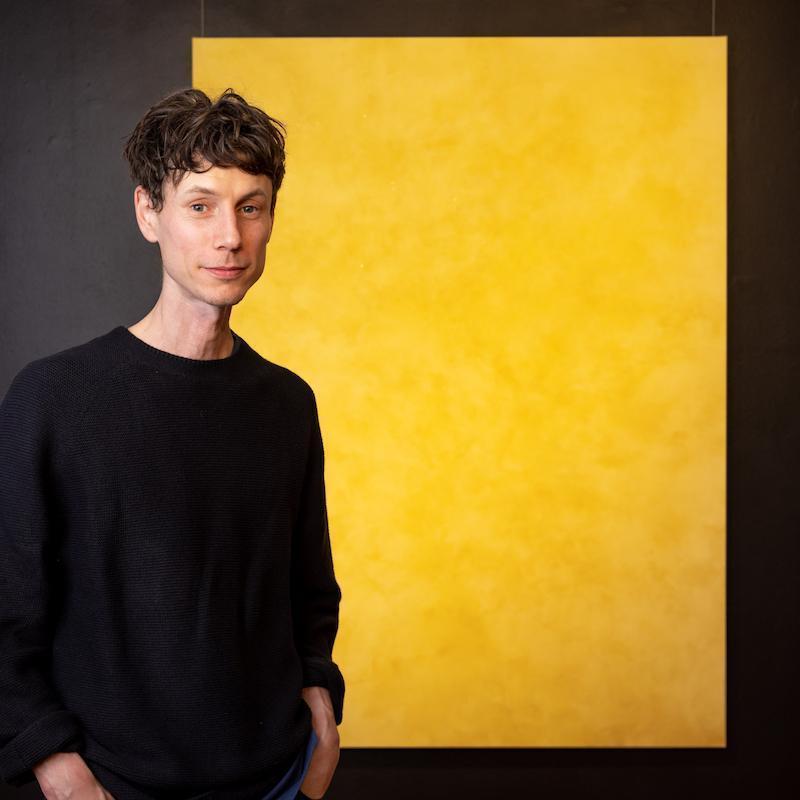A Collector’s Oeuvre
A special interview with collector Norman Rosenblatt.
Words: Rose of Sharon Leake
Currently on show at Bayside Gallery is Eyes that see: the collection of Norman Rosenblatt. Curated by Joanna Bosse, the exhibition presents a selection of works collected by Rosenblatt over the past 65 years. Art Collector’s editor Rose of Sharon Leake (RL) interviews Rosenblatt (NR) about his very first buy, skipping school as a boy to go to art auctions, and the importance of collections in public view.
RL: Norman thanks so much for joining me. Your art collection in the exhibition Eyes that See is currently on show at Bayside Gallery…
NR: It’s only part of the collection, about a third. I let [the curator] Joanna Bosse choose whatever she wanted.
RL: A third… you must have a very large collection then! When and how did you start collecting art?
NR: When I started – well, I suppose, in your early childhood, you know, you mightn’t collect art, but you collect things. I would wag school on Thursday afternoons and go to an auction room called Leonard Joel on McKillop Street in the city.
RL: So, it really started from a very young age for you.
NR: Well, I’m 79 in two weeks. So, it’d be about 65 years ago.
RL: That’s quite incredible. What would you say drives your collecting practice?
NR: The gene that we’re born with to create – at all levels – absolutely fascinates me. It’s just something that’s matured and matured and gone on all the time. I’ve always been fascinated with how people can get a blank canvas or a block of marble, or just a blank piece of paper to create music and so many different things…so many beautiful things. I’m very eclectic [in my taste]. I think it’s luck that some of the [artists I collect] get notoriety later on. Maybe not luck, it just sometimes happens, but it’s not the reason you collect. Not the reason I collect, anyhow.
RL: Yeah, there is the age-old debate of whether you should collect for love or for investment. What would be your opinion on that?
NR: Well, I always call the investment part the ‘art poker’. It’s just showing, most probably, how much currency you must buy what’s at the top of the tree. And I’m not trying to say that the top of the tree is not great art. We all started off as babies. And so did art and the act of creation. We didn’t just grow and pop out at 45 years of age. We started somewhere. And the fascination for me is to find that and see that grow. Sometimes I can’t see that growth because the artists are dead; I’m fascinated by artists I’ve never heard of, especially the modern painters, that’ve sort of missed the art bus.
RL: Your collection is a creation in its own. How has it developed with your growth as a collector?
NR: Just like growing up as a person, I suppose. 40 years ago, I was also very interested in English watercolour, and studied it quite extensively. But I won’t say you grow out of it, it’s part of the lessons you learn, to see where you want to go. And it never ends. It’s like going to university and getting another degree. You [understand more] what’s going on in the art. It never ends. It never ends.
RL: So, in terms of your own collection, what do you think it says about you and your personality?
NR: Well, I don’t know. I’ll leave that to other people to judge.
I’m very driven. Even when I was in business, I’m driven by giving people the chance. You don’t have to come from the right side of the track to get to the top.
RL: What do you hope that audiences might gain from viewing your collection at Bayside Gallery?
NR: Well one of the things I’m really proud of – Well, there’s two things that I’m really proud of: I love that there’s somebody else who loves what I love and they want to show it to people, because I always believed you’ve only got these things on loan. Because when you fall off the cliff, they gather other lives. Collectors don’t gather any creative purpose, or the people that buy art. Paintings and art, so long as people don’t destroy it, and look after it live for years and years– longer than the collector.
The thing that I’m proud of in this collection, or what Joanna’s done, is the involvement in this organisation called Arts Projects Australia, which involves – I hate the word– disabled artists that are a little different than you and I. Joanna has done an amazing job seamlessly intermingling those artists in this exhibition with mainstream artists that I call ‘artists that have received recognition’. It’s just seamless. And the other thing I love in this exhibition is it’s the first time Danila Vassilieff’s 1947 portraits of his then new wife Elizabeth have shown. There are eight paintings that took me two-and-a-half years to put together. If you have a look I, think it’s the best thing I’ve accomplished, and these are eight paintings that were done in the first year of their marriage. I don’t think any other Australian artist has painted in such passion. And if you read the story of their love – their meeting – it’s amazing. The works are amazing.
RL: Clearly you have a passion about telling stories.
NR: I love it. One of the things I love is meeting the artist. I can’t meet them if they’re dead… but maybe I do in a way. I imagine things through their work and stories. Marks come on to a canvas but there is so much behind those marks, it’s a fascinating story in itself.
RL: Are there any works in your collection showing at the exhibition that you would like to speak about specifically?
NR: Well, there’s the first artwork I ever collected, and I still don’t know who the artist is. I bought it with my pocket money. I’ve never sold it, I’m not a seller of paintings – I will sell the odd thing– maybe after 60 years you fall out of love with and you still like it, but you don’t love it. But it’s like losing a child, getting rid of a painting, I don’t think it’s possessiveness but it’s a matter of, you bought it because you cared about it. I always look at it this way – if you look at the work, it’s like picking up a piece of beautiful Ming porcelain, you pick it up and look at it and you don’t know who the artist was, you look at its beauty.
RL: When an artwork is collected into a private collection, the work often disappears in a way from view. But with this exhibition your works are back in public sight. Do you think there should be more opportunities for collectors to show their work publicly?
NR: Totally. It’s like having maybe 200 or 300 small AGNSW. I don’t go out of my way to collect [big] named artists, some of them may become named artists. But it’s important for people to see them. I’ve always thought that art is for everybody. You must share – someone else might fall in love with the work other than me.
RL: It’s interesting too from the artist’s perspective when their work ends up in a private collection or on public view. They have created the work as an extension of themselves and their practice so the artist might want it to be seen by multiple people.
NR: It’s so important, you owe it to an artist. I don’t think you’ve got the right to hide something for 50 years that is so important. You should allow people to see an artist’s early works and see how they have progressed. Some of the best paintings I love cost me a hundred bucks and I still love them; it’s got nothing to do with money.
Eyes that see: the collection of Norman Rosenblatt is on show at Bayside Gallery, Melbourne until 23 October 2022.
This article was posted 14 September 2022.
Image: Installation view, Rosenblatt home, 2022. Courtesy: Bayside Gallery.

